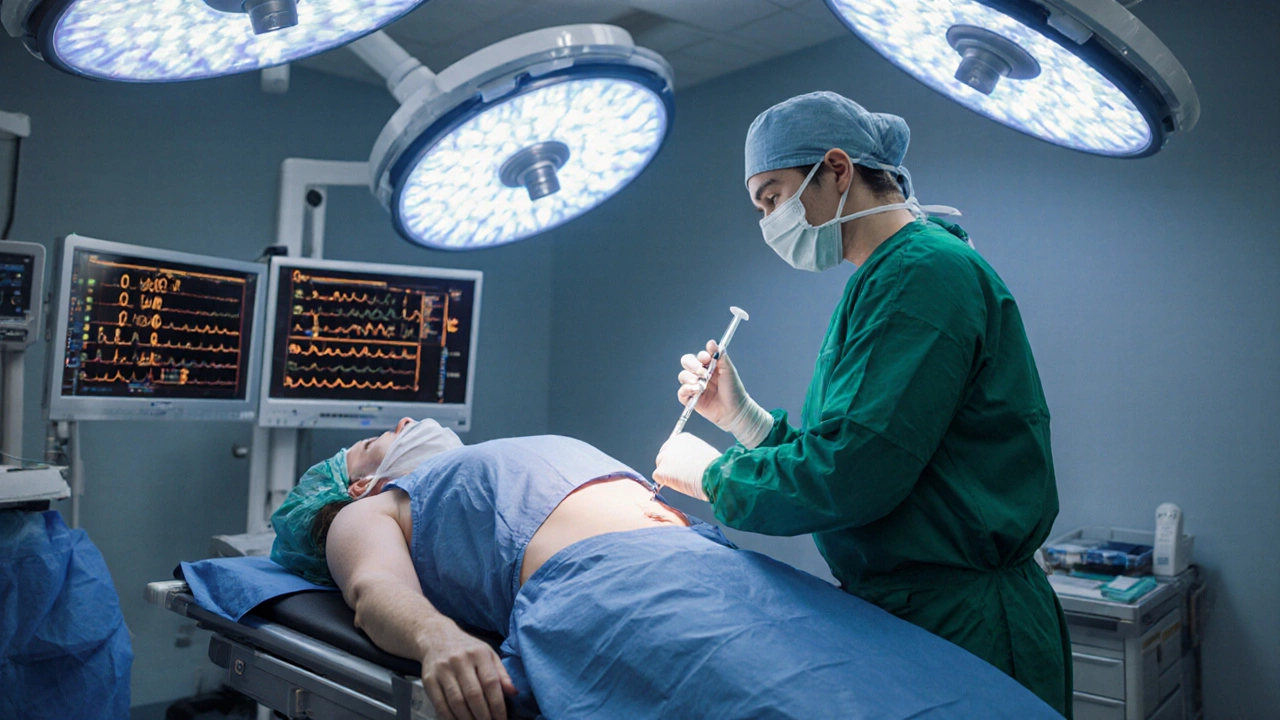 Oct, 8 2025
Oct, 8 2025
Cosmetic Surgery Risk Calculator
Fatality Rate:
Major Complication:
Recovery Time:
Risk Level Guide
High Risk
Fatality rate 0.1% or higher
Medium Risk
Fatality rate between 0.02% and 0.1%
Low Risk
Fatality rate less than 0.02%
What’s the riskiest cosmetic surgery you can walk into a clinic for? The answer isn’t a headline‑grabbing hype-it’s a procedure that, according to multiple safety audits, carries a death rate far higher than any other aesthetic operation. In this article we break down the numbers, compare the top contenders, and give you a checklist to protect yourself if you ever consider going under the knife.
Key Takeaways
- The Brazilian Butt Lift (BBL) consistently shows the highest fatality rate among elective cosmetic surgeries.
- Fat‑embolism, poor patient positioning, and inexperienced surgeons are the main killers.
- Liposuction, breast augmentation, rhinoplasty, and facelifts also have notable risks, but their mortality rates are markedly lower.
- Choosing a board‑certified surgeon, confirming facility accreditation, and demanding a thorough pre‑op evaluation can cut complications dramatically.
- Know the red‑flag signs: vague consent forms, pressure to book immediately, and unwillingness to discuss complications.
What Makes a Cosmetic Surgery Risky?
Risk isn’t just about how invasive a procedure looks; it’s a mix of three core factors:
- Technical complexity - procedures that require precise handling of delicate tissues increase chances of error.
- Patient‑related variables - age, BMI, smoking status, and pre‑existing health conditions can amplify danger.
- Operative environment - non‑accredited centers, inadequate anesthesia monitoring, and rushed schedules add layers of hazard.
When these elements align poorly, even a seemingly simple makeover can turn fatal.

Brazilian Butt Lift - The Riskiest Procedure
Brazilian Butt Lift is a fat‑grafting surgery that harvests fat from the abdomen, hips, or thighs and injects it into the buttocks to enhance shape and volume. Over the past decade, the American Society of Plastic Surgeons (ASPS) reported a mortality rate of roughly 1 in 2,000 cases - a figure that dwarfs the 1 in 10,000‑plus rate for most other aesthetics.
The chief culprit is fat embolism - when fat particles enter the bloodstream and block pulmonary arteries, causing sudden respiratory collapse. The risk rises when surgeons inject fat too deep into the muscle layer instead of the safe subcutaneous zone.
Additional danger stems from the typical prone (face‑down) positioning required for proper contouring, which can compress the chest and hamper ventilation if not monitored closely.
Close Runners: Other High‑Risk Cosmetic Surgeries
Liposuction is the surgical removal of excess fat through suction cannulas, often performed on the abdomen, flanks, or thighs. While generally safe, large‑volume liposuctions (>5L) raise the chance of blood loss, fluid shifts, and, in rare cases, fat embolism.
Breast Augmentation is the placement of silicone or saline implants to enlarge or reshape the breasts. Complications include capsular contracture, implant rupture, and, if performed under general anesthesia, the standard anesthesia‑related risks.
Rhinoplasty is a nose reshaping surgery that can involve bone, cartilage, and soft‑tissue adjustments. Bleeding, infection, and postoperative breathing difficulties are the primary concerns, especially when extensive cartilage grafting is needed.
Facelift is a comprehensive facial rejuvenation that tightens skin, removes excess tissue, and lifts underlying structures. Risks include nerve injury, hematoma, and, in older patients, poorer wound healing.
Risk Comparison Table
| Procedure | Fatality Rate (per 1,000) | Common Major Complication | Typical Recovery Time |
|---|---|---|---|
| Brazilian Butt Lift | 0.5 | Fat Embolism | 6‑8 weeks |
| Liposuction | 0.09 | Serous Fluid Accumulation | 3‑6 weeks |
| Breast Augmentation | 0.04 | Implant Rupture / Capsular Contracture | 2‑4 weeks |
| Rhinoplasty | 0.02 | Bleeding / Infection | 1‑2 weeks |
| Facelift | 0.03 | Nerve Damage / Hematoma | 2‑3 weeks |

How to Minimize Your Risk
Even the riskiest procedures can be performed safely if you follow a strict safety checklist:
- Verify surgeon credentials: Look for board certification in plastic surgery and a history of >200 of the specific procedure.
- Check facility accreditation: The clinic should be accredited by the Joint Commission or an equivalent body.
- Demand a detailed consent form: It must list specific risks, including fat embolism for BBLs.
- Insist on proper anesthesia monitoring: An anesthesiologist (not just a nurse‑administered sedation) should be present for any surgery lasting longer than an hour.
- Ask about intra‑operative imaging: Some surgeons use ultrasound to confirm fat placement depth, reducing embolism risk.
- Plan for postoperative care: Arrange a follow‑up within 48hours and know the signs of vascular compromise (severe chest pain, shortness of breath, sudden swelling).
Red Flags - When to Walk Away
If a provider exhibits any of the following, consider looking elsewhere:
- They downplay complications or claim “0% risk.”
- They push for immediate booking without a thorough medical review.
- The clinic lacks clear signage of accreditation or does not display surgeon credentials.
- They refuse to show you before‑and‑after photos of prior patients with similar anatomy.
- They do not offer a written postoperative plan or emergency contact.
Remember, a cosmetic surgery should enhance your confidence, not jeopardize your health.
Frequently Asked Questions
Why does the Brazilian Butt Lift have such a high death rate?
The primary danger is fat embolism, which occurs when injected fat enters large veins and travels to the lungs. Improper injection depth and the prone surgical position increase this risk. Studies from the ASPS and the FDA show a fatality rate of about 1 in 2,000, the highest among elective aesthetic procedures.
Can I reduce the risk of fat embolism during a BBL?
Yes. Choose a surgeon who uses ultrasound or fluoroscopy to confirm subcutaneous fat placement, limits the volume per session (usually under 1,500cc), and performs the surgery in a hospital‑level accredited facility with full anesthesia monitoring.
Are other procedures like liposuction or breast augmentation safe?
They are generally safer than BBLs, with fatality rates ranging from 0.02 to 0.09 per 1,000 cases. However, complications such as infection, hematoma, or implant rupture still occur, especially if performed by inexperienced surgeons or in non‑accredited settings.
How can I verify a surgeon’s experience?
Check their board certification, ask for the number of specific procedures they’ve performed, and request references from past patients. Reputable surgeons will readily share before‑and‑after photos and provide outcomes data.
What symptoms should I watch for after surgery?
Seek immediate medical care if you develop shortness of breath, chest pain, sudden swelling, intense abdominal pain, or a rapid drop in blood pressure. These can signal fat embolism, internal bleeding, or infection.
